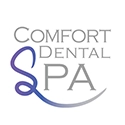Dr. Aziza Askari recently became a member of the American Academy of Craniofacial Pain, so over the next few weeks we’ll be taking a look at all things related to jawbone health. Why? Because oral health refers to all parts of your mouth and oral system, including your jawbone, also known as the mandible, which is the bone that holds the bottom teeth.
To learn more about the relationship between the health and beauty of your smile and the health of your jaw, you first need to understand the anatomy of your jawbone and how it functions.
The Anatomy of the Mandible (Lower Jaw)
The mandible is the largest and strongest bone in the face and serves as the base for the lower teeth. It consists of a curved, horizontal portion, the body, two perpendicular portions, and the rami, which unite the ends of the body of the bone.
Now, let’s take an up-close look at each component of the mandible. The body, scientifically referred to as corpus mandibulae, is the main structure of the jawbone and is shaped somewhat like a horseshoe with two surfaces and two borders.
There are several surfaces on the mandible. The external surface is located just under your bottom front teeth and is connected to the mental protuberance, the base of which is depressed in the center but raised on either side to form the mental tubercle. These structures are all located in the front region of the jawbone. Moving towards the back of the jaw, the incisive fossa, mental foramen, and oblique line extend on the outer edge of the jawbone body. The internal part of the jaw consists of fewer parts. The internal surface is concave from side to side and mirrors the position of the external surface.
The superior (alveolar) border is wider behind than it is in the front and is hollowed into cavities, which vary inside depending on the size and shape of the teeth that they contain. The inferior border is rounded, longer than the superior, and thicker in front than behind.
The ramus is quadrilateral in shape and has two surfaces, four borders, and two processes.
What These Terms Mean to You
We know that this can sound overwhelming and unfamiliar, but one of our goals here at Comfort Dental Spa is for our patients to be as informed as possible about what’s going on inside of their mouths and with their dental care. We offer a number of jaw-related treatments, including those for TMJ dysfunction, bone grafting, facial trauma reconstruction, wisdom teeth extractions, and other treatments for malocclusion. Over the next few weeks, we’ll be taking an in-depth look at several components of jawbone health and how it relates to the health and beauty of your smile.

 This Summer
This Summer  $1,000 OFF Braces!
$1,000 OFF Braces!